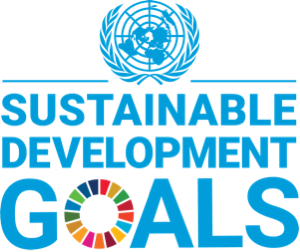The Impact Of Sustainable Supply Chain Management Practices On Organizational Performance In Ghana
DOI:
https://doi.org/10.52812/msbd.32Keywords:
Sustainability, Supply Chain Management Practices, Green Supply Chain Practice, Organizational Performance, Structural equation modelingAbstract
The study explores the impact of ecological supply chain management practices such as Green Supply Chain, environmental and operational management practices of organizational performance in Ghana. The organizational performance was measured based upon three parameters constituting Sustainable Environmental Performance (SENP), Sustainable Economic Performance (SECP), and Competitiveness (COMP). Exogenous factors included the constructs of Sustainable Supply Chain Management (SSCM) practices and the single-item construct voluntary adoption of SSCM practices, while endogenous variables included the three aspects of firm performance. The relationship between sustainable management practices and organizational performance was ascertained using Structural Equation Modeling. A few significant results are presented as follows; (1) Environmental Management Practices (EMP) results in enhanced Sustainable Environmental Performance (SENP) and Sustainable Economic Performance (SECP); (2) Organizational Performance has a strong correlation with SECP and COMP; (3) SECP has a substantial and favorable relationship with both competitiveness and sustainable environmental performance, as well as sustainable economic performance. The positive relationship between SSCM practices and firm performance demonstrates that continual sustainable management principles eventually improve community capacity. This ultimately results in an organization’s competitiveness. Additionally, the managerial implications of the results are addressed.
References
Ahi, P. & Searcy, C. (2013). A comparative literature analysis of definitions for green and sustainable supply chain management. Journal of Cleaner Production, 52, 329-341. https://doi.org/10.1016/j.jclepro.2013.02.018
Ahmed, M. U., Kristal, M. M., & Pagell, M. (2014). Impact of operational and marketing capabilities on firm performance: Evidence from economic growth and downturns. International Journal of Production Economics, 154, 59-71. https://doi.org/10.1016/j.ijpe.2014.03.025
Albino, V., Balice, A., & Dangelico, R. M. (2009). Environmental strategies and green product development: an overview on sustainability‐driven companies. Business strategy and the environment, 18(2), 83-96. https://doi.org/10.1002/bse.638
Albort-Morant, G., Leal-Millán, A., & Cepeda-Carrión, G. (2016). The antecedents of green innovation performance: A model of learning and capabilities. Journal of Business Research, 69(11), 4912-4917. https://doi.org/10.1016/j.jbusres.2016.04.052
Atasu, A., Guide Jr, V. D. R., & Van Wassenhove, L. N. (2008). Product reuse economics in closed‐loop supply chain research. Production and Operations Management, 17(5), 483-496. https://doi.org/10.3401/poms.1080.0051
Benah, S., & Li, Y. (2020). Examining the Relationship between Lean Supplier Relationship Management (LSRM) and Firm Performance: A Study on Manufacturing Companies in Ghana. Open Journal of Business and Management, 8(6), 2423. https://doi.org/10.4236/ojbm.2020.86150
Berry, M. A., & Rondinelli, D. A. (1998). Proactive corporate environmental management: A new industrial revolution. Academy of Management Perspectives, 12(2), 38-50. https://doi.org/10.5465/ame.1998.650515
Beske, P., Land, A., & Seuring, S. (2014). Sustainable supply chain management practices and dynamic capabilities in the food industry: A critical analysis of the literature. International Journal of Production Economics, 152, 131-143. https://doi.org/10.1016/j.ijpe.2013.12.026
Bowen, F. E., Cousins, P. D., Lamming, R. C., & Farukt, A. C. (2001). The role of supply management capabilities in green supply. Production and Operations Management, 10(2), 174-189. https://doi.org/10.1111/j.1937-5956.2001.tb00077.x
Carter, C. R., & Jennings, M. M. (2002). Social responsibility and supply chain relationships. Transportation Research Part E: Logistics and Transportation Review, 38(1), 37-52. https://doi.org/10.1016/S1366-5545(01)00008-4
Chang, C. H. (2016). The determinants of green product innovation performance. Corporate Social Responsibility and Environmental Management, 23(2), 65-76. https://doi.org/10.1002/csr.1361
Chin, C.L., & Yao, G. (2014). Convergent validity. In A. C. Michalos (Ed.), Encyclopedia of quality of life and well-being research (np). Dordrecht, Germany: Springer. https://doi:10.1007/978-94-007-0753-5
Chin, W. W. (1998). Commentary: Issues and Opinion on Structural Equation Modeling. MIS Quarterly, 22(1), vii–xvi. http://www.jstor.org/stable/249674
Cousins, P. D., Handfield, R. B., Lawson, B., & Petersen, K. J. (2006). Creating supply chain relational capital: The impact of formal and informal socialization processes. Journal of operations management, 24(6), 851-863. https://doi.org/10.1016/j.jom.2005.08.007
Cuerva, M. C., Triguero-Cano, Á., & Córcoles, D. (2014). Drivers of green and non-green innovation: empirical evidence in Low-Tech SMEs. Journal of Cleaner Production, 68, 104-113. https://doi.org/10.1016/j.jclepro.2013.10.049
Dangelico, R. M., & Pujari, D. (2010). Mainstreaming green product innovation: Why and how companies integrate environmental sustainability. Journal of Business Ethics, 95(3), 471-486. https://doi.org/10.1007/s10551-010-0434-0
Dangelico, R. M., Pujari, D., & Pontrandolfo, P. (2017). Green product innovation in manufacturing firms: A sustainability‐oriented dynamic capability perspective. Business strategy and the Environment, 26(4), 490-506. https://doi.org/10.1002/bse.1932
Darnall, N., Jolley, G. J., & Handfield, R. (2008). Environmental management systems and green supply chain management: complements for sustainability?. Business Strategy and the Environment, 17(1), 30-45. https://doi.org/10.1002/bse.557
De Medeiros, J. F., Ribeiro, J. L. D., & Cortimiglia, M. N. (2014). Success factors for environmentally sustainable product innovation: a systematic literature review. Journal of Cleaner Production, 65, 76-86. https://doi.org/10.1016/j.jclepro.2013.08.035
DeVon, H. A., Block, M. E., Moyle‐Wright, P., Ernst, D. M., Hayden, S. J., Lazzara, D. J., ... & Kostas‐Polston, E. (2007). A psychometric toolbox for testing validity and reliability. Journal of Nursing Scholarship, 39(2), 155-164. https://doi.org/10.1111/j.1547-5069.2007.00161.x
Eltayeb, T., & Zailani, S. (2014). Going green through green supply chain initiatives toward environmental sustainability. Operations and Supply Chain Management: an International Journal, 2(2), 93-110. http://doi.org/10.31387/oscm040019
Esfahbodi, A., Zhang, Y., & Watson, G. (2016). Sustainable supply chain management in emerging economies: Trade-offs between environmental and cost performance. International Journal of Production Economics, 181, 350-366. https://doi.org/10.1016/j.ijpe.2016.02.013
Field, A. P. (2009). Discovering Statistics Using SPSS (3rd ed.). London: Sage Publications Ltd.
Fornell, C., & Larcker, D. F. (1981). Evaluating structural equation models with unobservable variables and measurement error. Journal of Marketing Research, 18(1), 39-50. https://doi.org/10.1177/002224378101800104
Galdeano-Gómez, E., Aznar-Sánchez, J. A., & Pérez-Mesa, J. C. (2013). Sustainability dimensions related to agricultural-based development: the experience of 50 years of intensive farming in Almería (Spain). International Journal of Agricultural Sustainability, 11(2), 125-143. https://doi.org/10.1080/14735903.2012.704306.
Gladwin, T. N., Kennelly, J. J., & Krause, T. S. (1995). Shifting paradigms for sustainable development: Implications for management theory and research. Academy of management Review, 20(4), 874-907. https://doi.org/10.5465/amr.1995.9512280024
González-Benito, J., & González-Benito, Ó. (2005). Environmental proactivity and business performance: an empirical analysis. Omega, 33(1), 1-15. https://doi.org/10.1016/j.omega.2004.03.002
Green, K. W., Zelbst, P. J., Meacham, J., & Bhadauria, V. S. (2012). Green supply chain management practices: impact on performance. Supply Chain Management, 17 (3), 290-305. https://doi.org/10.1108/13598541211227126.
Guoyou, Q., Saixing, Z., Chiming, T., Haitao, Y., & Hailiang, Z. (2013). Stakeholders' influences on corporate green innovation strategy: a case study of manufacturing firms in China. Corporate Social Responsibility and Environmental Management, 20(1), 1-14. https://doi.org/10.1002/csr.283.
Gupta, S., & Palsule-Desai, O. D. (2011). Sustainable supply chain management: Review and research opportunities. IIMB Management review, 23(4), 234-245. https://doi.org/10.1016/j.iimb.2011.09.002.
Hair Jr., Black, J. F., Babin, W. C., Anderson, R. E., & Tatham, R. L. (2006). Multivariate data Analysis (6th ed.). Upper Saddle River, NJ: Pearson-Prentice Hall.
Harms, D., Hansen, E. G., & Schaltegger, S. (2013). Strategies in sustainable supply chain management: an empirical investigation of large German companies. Corporate social responsibility and environmental management, 20(4), 205-218. https://doi.org/10.1002/csr.1293
Hart, S. L., & Ahuja, G. (1996). Does it pay to be green? An empirical examination of the relationship between emission reduction and firm performance. Business strategy and the Environment, 5(1), 30-37. https://doi.org/10.1002/(SICI)1099-0836(199603)5:1<30::AID-BSE38>3.0.CO;2-Q
Jauhar, S. K., & Pant, M., (2017). Integrating DEA with DE and MODE for sustainable supplier selection. Journal of Computational Science, 21, 299-306. https://doi.org/10.1016/j.jocs.2017.02.011
Juma, L., Ikram, M., Alkalha, Z., & Alaraj, M. (2021). Factors affecting managers’ intention to adopt green supply chain management practices: evidence from manufacturing firms in Jordan. Environmental Science and Pollution Research. https://doi.org/10.1007/s11356-021-16022-7
Kainuma, Y., & Tawara, N. (2006). A multiple attribute utility theory approach to lean and green supply chain management. International Journal of Production Economics, 101(1), 99-108. https://doi.org/10.1016/j.ijpe.2005.05.010
Kannan, V. R., & Tan, K. C. (2005). Just in time, total quality management, and supply chain management: understanding their linkages and impact on business performance. Omega, 33(2), 153-162. https://doi.org/10.1016/j.omega.2004.03.012
Kaynak, H. (2003). The relationship between total quality management practices and their effects on firm performance. Journal of Operations Management, 21(4), 405-435. https://doi.org/10.1016/S0272-6963(03)00004-4
Kir, K. F., Sarpong, F. A., Dazagbyilo, Y. Y. K., & Boukari, M. (2021). Research on the Effects of Influencing Factors of International Students on Employability: A Case Study in China. Open Journal of Business and Management, 9(4), 1942-1964. https://doi.org/10.4236/ojbm.2021.94105
Klassen, R. D., & Whybark, D. C. (1999). Environmental management in operations: the selection of environmental technologies. Decision Sciences, 30(3), 601-631. https://doi.org/10.1111/j.1540-5915.1999.tb00900.x
Koufteros, X. A., Cheng, T. E., & Lai, K. H. (2007). “Black-box” and “gray-box” supplier integration in product development: Antecedents, consequences and the moderating role of firm size. Journal of Operations Management, 25(4), 847-870. https://doi.org/10.1016/j.jom.2006.10.009
Lambert, D. M., & Enz, M. G. (2017). Issues in supply chain management: Progress and potential. Industrial Marketing Management, 62, 1-16. https://doi.org/10.1016/j.indmarman.2016.12.002
Laosirihongthong, T., Adebanjo, D., & Tan, K. C. (2013). Green supply chain management practices and performance. Industrial Management & Data Systems, 113 (8), 1088-1109. https://doi.org/10.1108/IMDS-04-2013-0164
Li, S., Ragu-Nathan, B., Ragu-Nathan, T. S., & Rao, S. S. (2006). The impact of supply chain management practices on competitive advantage and organizational performance. Omega, 34(2), 107-124. https://doi:10.1016/j.omega.2004.08.002
Linton, J. D., Klassen, R., & Jayaraman, V. (2007). Sustainable supply chains: An introduction. Journal of operations management, 25(6), 1075-1082. https://doi.org/10.1016/j.jom.2007.01.012
Lopes, C.M., Scavarda, A., Hofmeister, L.F., Thome, A.M.T. & Vaccaro, G.L.R. (2017). An analysis of the interplay between organizational sustainability, knowledge management, and open innovation. Journal of Cleaner Production, 142, 476-488. https:// doi.org/10.1016/j.jclepro.2016.10.083
López-Gamero, M. D., Molina-Azorín, J. F., & Claver-Cortés, E. (2009). The whole relationship between environmental variables and firm performance: Competitive advantage and firm resources as mediator variables. Journal of Environmental Management, 90(10), 3110-3121. https://doi.org/10.1016/j.jenvman.2009.05.007
Luthra, S., Govindan, K., Kannan, D., Mangla, S. K., & Garg, C. P. (2017). An integrated framework for sustainable supplier selection and evaluation in supply chains. Journal of Cleaner Production, 140, 1686–1698. https://doi.org/10.1016/j.jclepro.2016.09.078
Mahmoudi, A., Javed, S.A., & Mardani, A. (2021). Gresilient Supplier Selection through Fuzzy Ordinal Priority Approach: Decision-making in Post-COVID era. Operations Management Research. https://doi.org/10.1007/s12063-021-00178-z
Mani, V., Agrawal, R., & Sharma, V. (2014). Supplier selection using social sustainability: AHP based approach in India. International Strategic Management Review, 2(2), 98–112. https://doi.org/10.1016/j.ism.2014.10.003
Marshall, D., McCarthy, L., McGrath, P., & Claudy, M. (2015). Going above and beyond: how sustainability culture and entrepreneurial orientation drive social sustainability supply chain practice adoption. Supply Chain Management, 20(4), 434-454. https://doi.org/10.1108/SCM-08-2014-0267
Melnyk, S. A., Sroufe, R. P., & Calantone, R. (2003). Assessing the impact of environmental management systems on corporate and environmental performance. Journal of operations management, 21(3), 329-351. https://doi.org/10.1016/S0272-6963(02)00109-2
Mitra, S., & Datta, P. P. (2014). Adoption of green supply chain management practices and their impact on performance: an exploratory study of Indian manufacturing firms. International Journal of Production Research, 52(7), 2085-2107. https://doi.org/10.1080/00207543.2013.849014
Mol, A.P. & Carter, N.T. (2006). China’s environmental governance in transition. Environmental Politics, 15(2), 149-170.
Pagell, M. & Wu, Z. (2009). Building a more complete theory of sustainable supply chain management using case studies of 10 exemplars. Journal of Supply Chain Management, 45(2), 37-56. https://doi.org/10.1111/j.1745-493X.2009.03162.x
Pagell, M., & Gobeli, D. (2009). How plant managers’ experiences and attitudes toward sustainability relate to operational performance. Production and Operations Management, 18(3), 278–299. https://doi.org/10.1111/j.1937-5956.2009.01050.x
Porter, M.E. & Kramer, M. R. (2006). Strategy & society: the link between competitive advantage and corporate social responsibility. Harvard Business Review, 84(12), 78–85
Pullman, M. E., Maloni, M. J., & Carter, C. R. (2009). Food for thought: social versus environmental sustainability practices and performance outcomes. Journal of Supply Chain Management, 45(4), 38-54. https://doi.org/10.1111/j.1745-493X.2009.03175.x
Rao, P., & Holt, D. (2005). Do green supply chains lead to competitiveness and economic performance?. International Journal of Operations & Production Management, 25(9), 898-916. https://doi.org/10.1108/01443570510613956
Rao, S., & Goldsby, T. J. (2009). Supply chain risks: a review and typology. The International Journal of Logistics Management, 20(1), 97-123. https://doi.org/10.1108/09574090910954864
Schaltegger, S., & Burritt, R. (2014). Measuring and managing sustainability performance of supply chains: Review and sustainability supply chain management framework. Supply Chain Management, 19(3), 232-241. https://doi.org/10.1108/SCM-02-2014-0061
Shahzad, M., Qu, Y., Javed, S.A., Zafar, A. U., & Rehman, S. U. (2020). Relation of Environment Sustainability to CSR and Green Innovation: A Case of Pakistani Manufacturing Industry. Journal of Cleaner Production, 253, 119938. https://doi.org/10.1016/j.jclepro.2019.119938
Spangenberg, J. H., Fuad-Luke, A., & Blincoe, K. (2010). Design for Sustainability (DfS): the interface of sustainable production and consumption. Journal of Cleaner Production, 18(15), 1485-1493. https://doi.org/10.1016/j.jclepro.2010.06.002
Stock, J. R., & Boyer, S. L. (2009). Developing a consensus definition of supply chain management: a qualitative study. International Journal of Physical Distribution & Logistics Management, 39(8), 690-711. https://doi.org/10.1108/09600030910996323
Toloo, M., & Nalchigar, S. (2011). A new DEA method for supplier selection in presence of both cardinal and ordinal data. Expert Systems with Applications, 38(12), 14726–14731. https://doi.org/10.1016/j.eswa.2011.05.008
Trapp, A. C., & Sarkis, J. (2016). Identifying robust portfolios of suppliers: A sustainability selection and development perspective. Journal of Cleaner Production, 112, 2088–2100. https://doi.org/10.1016/j. jclepro.2014.09.062
Tsoulfas, G. T., & Pappis, C. P. (2008). A model for supply chains environmental performance analysis and decision making. Journal of Cleaner Production, 16(15), 1647-1657. https://doi.org/10.1016/j.jclepro.2008.04.018
Vachon, S., & Klassen, R. D. (2006). Green project partnership in the supply chain: the case of the package printing industry. Journal of Cleaner production, 14(6-7), 661-671. https://doi.org/10.1016/j.jclepro.2005.07.014
Vachon, S., & Mao, Z. (2008). Linking supply chain strength to sustainable development: a country-level analysis. Journal of Cleaner Production, 16(15), 1552-1560. https://doi.org/10.1016/j.jclepro.2008.04.012
Viscusi, W. K. (1983). Risk by choice: Regulating health and safety in the workplace. Cambridge, MA: Harvard University Press.
Wang, J., Zhang, Y., & Goh, M. (2018). Moderating the role of firm size in sustainable performance improvement through sustainable supply chain management. Sustainability, 10(5), 1654. https://doi.org/10.3390/su10051654
Weeratunge, R. D., & Herath, R. (2017). The dimensions of green supply chain management practices. In: Proceedings of the 3rd World Conference on Supply Chain Management, 2, 123-132. https://doi.org/10.17501/wcosm.2017.2111
Wu, L., Subramanian, N., Abdulrahman, M. D., Liu, C., Lai, K. H., & Pawar, K. S. (2015). The impact of integrated practices of lean, green, and social management systems on firm sustainability performance—evidence from Chinese fashion auto-parts suppliers. Sustainability, 7(4), 3838-3858. https://doi.org/10.3390/su7043838
Yang, C.L., Lin, S.P., Chan, Y.H. & Sheu, C. (2010). Mediated effect of environmental management on manufacturing competitiveness: an empirical study. International Journal of Production Economics, 123(1), 210-220. https://doi.org/10.1016/j.ijpe.2009.08.017
Yang, M. G., Hong, P., & Modi, S. B. (2011). Impact of Lean Manufacturing and Environmental Management on Business Performance: An Empirical Study of Manufacturing Firms. International Journal of Production Economics, 129, 251-261. https://doi.org/10.1016/j.ijpe.2010.10.017
Zailani, S., Jeyaraman, K., Vengadasan, G. and Premkumar, R. (2012). Sustainable supply chain management (SSCM) in Malaysia: A survey. International Journal of Production Economics, 140(1), 330-340. https://doi.org/10.1016/j.ijpe.2012.02.008
Zain, M. & Kassim, N.M. (2012). The influence of the internal environment and continuous improvements on firms’ competitiveness and performance. Procedia-Social and Behavioral Sciences, 65, 26-32. https://doi.org/10.1016/j.sbspro.2012.11.086
Zhu, Q. & Sarkis, J. (2004). Relationships between operational practices and performance among early adopters of green supply chain management practices in Chinese manufacturing enterprises. Journal of Operations Management, 22(3), 265-289. https://doi.org/10.1016/j.jom.2004.01.005
Zhu, Q., Sarkis, J. & Lai, K.H. (2007). Green supply chain management: pressures, practices, and performance within the Chinese automobile industry. Journal of Cleaner Production, 15(11-12), 1041-1052. https://doi.org/10.1016/j.jclepro.2006.05.021
Zhu, Q., Sarkis, J., Cordeiro, J.J. & Lai, K.H. (2008). Firm-level correlates of emergent green supply chain management practices in the Chinese context. Omega, 36(4), 577-591. https://doi.org/10.1016/j.omega.2006.11.009
.

Downloads
Published
How to Cite
Issue
Section
License
Copyright (c) 2021 Science Insight

This work is licensed under a Creative Commons Attribution-NonCommercial 4.0 International License.
Creative Commons Non Commercial CC BY-NC: The work is distributed under the terms of the Creative Commons Attribution-NonCommercial 4.0 License which permits non-commercial use, reproduction and distribution of the work without further permission provided the original work is properly attributed.











